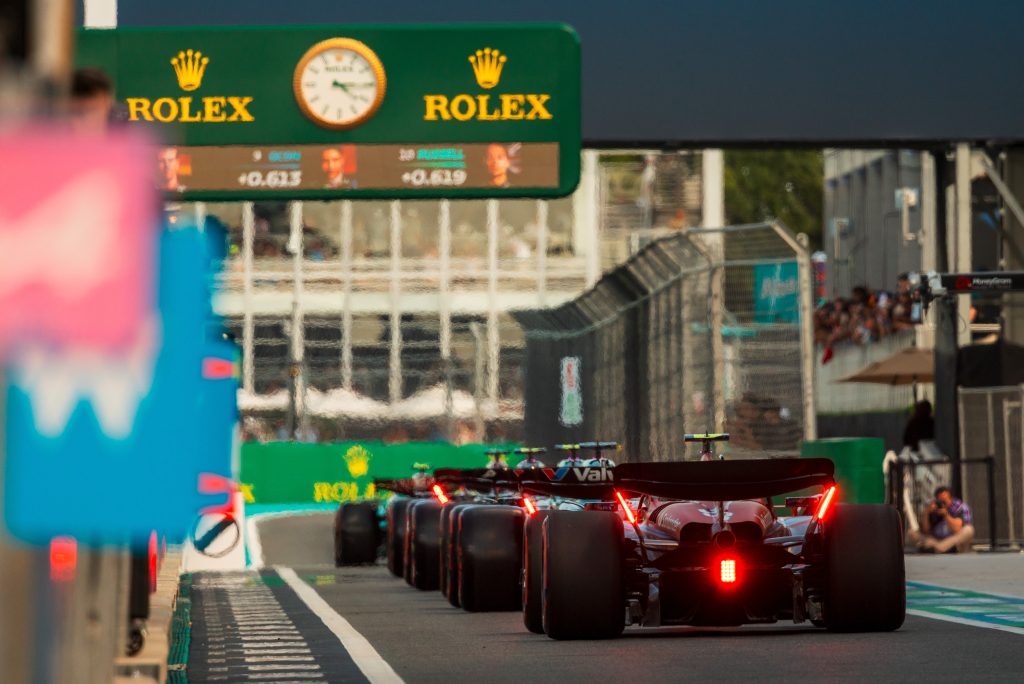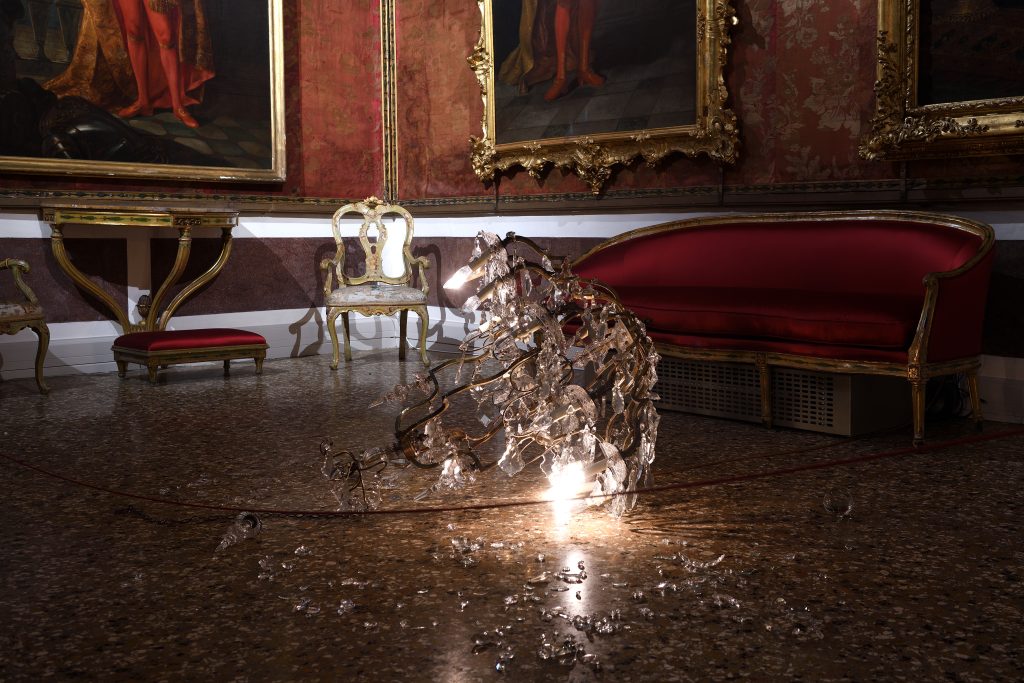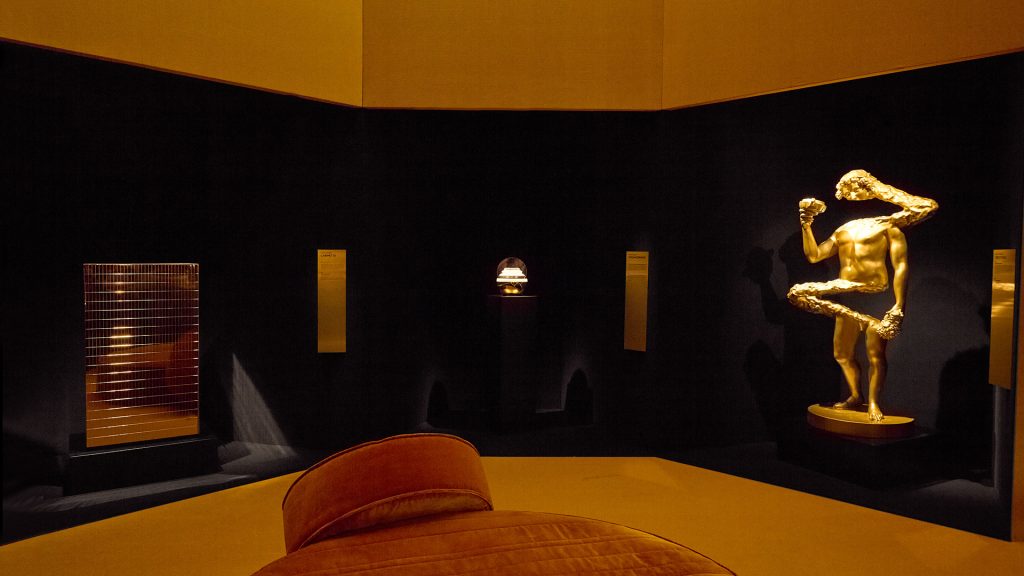Interview: Artist Richard Woods on “Upgrade” at Skip Gallery
Dissecting an exhibition on houses and housing in London

Housing and houses are an English obsession—the old adage “an Englishman’s home is his castle” still holds true for many, and the failure of millennials to get on the property ladder, as well as the increase of homelessness in major UK cities, are regularly the subject of the news. That the artist Richard Woods is one of those fascinated by the topic is no wonder; many of his artworks have an architectural aspect and subvert the way in which we look at houses and buildings, both externally and internally. His colorful, graphic designs include his trademark wooden floors in a myriad of different hues, and the “Holiday Homes” project that saw the artist create bungalows a third of the size of regular holiday homes and place them in unexpected places around Folkestone in England.

“Holiday Homes” forms a kind of background to his latest venture “Upgrade,” an exhibition at Skip Gallery in time for the London Festival of Architecture. The Skip Gallery is exactly what it sounds like—a gallery in a skip (otherwise known as a large outdoor container). The location isn’t intended as a comment on the quality of modern art; rather, the idea behind Skip Gallery, which was founded by artists Catherine Borowski and Lee Baker, is to “take the mundane, the everyday and everyplace and to reimagine it as the creative, the arresting and the inspirational.” Woods will create a house for the skip, which will be located in Hoxton Square in east London from 1-30 June. We spoke to the artist about his abandoned house, changing cities and his other upcoming works.

What attracted you to the concept of the Skip Gallery?
I’ve always kind of enjoyed looking into skips. When I was doing the “Holiday Home” project in Folkestone we put away the bits we didn’t need, and I thought it would be a nice extension of the project to play around with the image of the skip. Coincidentally, Lee [Baker] got in touch and asked if I wanted to get involved with the Skip Gallery! We both had the same idea.
After the Folkestone project it made sense to extend the narrative into the way we see parts of houses—bathroom, sofas—thrown into skips. A lot of the work I’ve made was from materials that were dragged out of skips and reused. It’s a kind of urban recycling, even though you’re not supposed to take things out of skips; you get to see what things other people have. There was also this idea of how tastes change, that somebody has bought a house and then thrown out the whole house.
Was it a challenge to create an artwork for such a clearly defined and contained space?
Well, the house is actually quite big, sticking out over the top of the container. What interests me is when the things I make, which are cartoons, meet the real world—like how my cartoon floors meet the real world when used together with regular furniture. That juxtaposition is, in a sense, heightened with the skip—it’s this cartoon, a drawing of a house, stuck into a real skip: the real and graphic meeting. It’s similar to the houses in Folkestone, but there it was the real landscape that triggered the visual. With “Upgrade” it’s more physical, the act of a house being tumbled into a skip and left there.
Housing and houses in general are such an extraordinary, potent subject at the moment, and everyone is interested in various aspects of it. The topic ties into social issues and status anxiety, it brings up questions of relationships, homelessness and housing prices, and I find those things fascinating. Hopefully some of the discussions about “Upgrade” will circle around these subjects, but you never know what the reception will be with public art—will it work? Will it trigger discussion? When you’re making a piece to go in the street it’s very different to making work for an art gallery. The context is fluid, and that’s why it’s interesting.

How is the sculpture weather-proof?
The house is made of exterior wood, so it will be fine for years. All of my work is kind of made with building techniques—I was a builder for quite a few years after college.
As someone who went to art school in London in the late ’80s and has seen the city change over the years, what are your thoughts on that?
Cities are living and breathing organisms. They expand and contract, that’s part of their lives, and it’s extraordinary to witness. I live in Bethnal Green and it fuels the work to witness the movement of people. People are always leaving and coming; all cities have historically undergone those changes. I’m fascinated by it as it is so speeded up in London at the moment, so fast—but it’s natural. Things get built, things get torn down, things change.
What other projects are you working on at the moment?
I have a show at Alan Cristea Gallery coming up in June. It’s actually an exhibition of collateral stuff from both Folkestone and this project—the two-dimensional works behind the public art. I’m also building a new house to go in Frieze’s sculpture park in Regent’s Park that will be identical to the skip one, but bigger. That’s interesting because there’s an aggression to the act of throwing something in a skip, but then that “same” house will also be shown in a very regal setting in Regent’s Park. I like the idea that in this series the houses are identical, as it heightens the difference in locations. It’s important for me to keep the actual structure the same, and it will be interesting to see the house in more manicured surroundings.
Artist portraits by Ali Tollervey for Skip Gallery, all others courtesy of Richard Woods Studio











